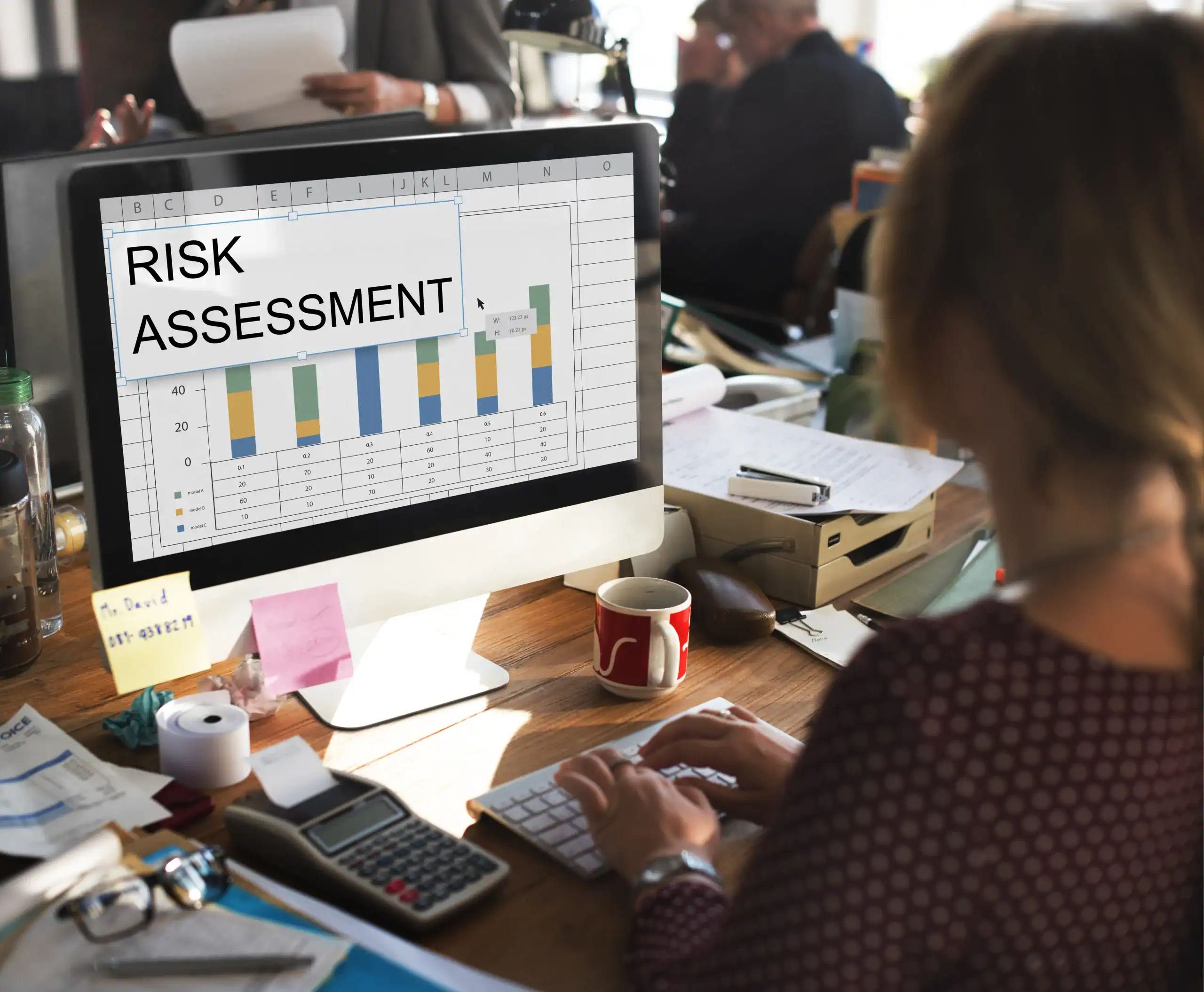Risk in EPC Industry: A Complete Guide for Stakeholders
Introduction
The Engineering, Procurement, and Construction (EPC) sector plays the most important role in providing multi-territory infrastructure, including power, oil & gas, and industrial projects across the world. However, the EPC sector is not without challenges. Each EPC project involves multiple stakeholders, compact deadlines, no-limit budgets, and complicated contractual frameworks. With such complexities, uncertainties in the EPC sector become intolerable.
From financial uncertainties and supply chain disruptions to tailor errors and safety concerns, risks can significantly impact project delivery. Understanding these risks and managing them effectively is crucial for contractors, clients, and investors alike.
In this blog, we are going to explore the types of risks in the EPC industry, their impact on projects, and strategies to justify them. By the end, you will gain a complete view of how risk management ensures successful EPC project execution.

Why Risk Management Matters in the EPC Industry
The EPC model seems to be attractive because it permits their clients to transfer most of the project risks and challenges to contractors. Under an EPC contract, the contractor is responsible for engineering, procurement, and construction, usually on a fixed-price deal with the client on a turnkey basis. While this reduces the client’s exposure, it places significant pressure on EPC contractors.
Without proper risk identification and mitigation, EPC contractors may face:
- Cost overruns due to inflation, scope changes, or procurement delays.
- Schedule slippages caused by unforeseen challenges.
- Legal disputes related to contract terms or liabilities.
- Reputational damage that affects future project opportunities.
Thus, recognizing and addressing risks in advance is not just a good practice—it is essential for survival and long-term growth in the EPC sector.
Key Risks in the EPC Industry
Let’s break down the major risks in the EPC industry and analyze their implications.
Financial Risks
- Financial risks are among the most common in EPC projects. These include:
- Cost overruns due to material price escalation or currency fluctuations.
- Inaccurate cost estimation during the bidding phase.
- Delayed payments from clients, which strain cash flow.
- Funding challenges if projects rely on external financing.
Example: A road construction project budgeted at ₹500 crores could escalate by 15–20% if steel and cement prices rise unexpectedly.
Contractual Risks
EPC contracts often run hundreds of pages long, covering responsibilities, penalties, and liabilities. Misinterpretation or poorly drafted terms can lead to disputes.
Key contractual risks include:
- Ambiguous scope definitions leading to scope creep.
- Penalty clauses for delays or non-performance.
- Unclear responsibilities between contractor and subcontractors.
- Legal compliance failures across different jurisdictions.
Impact: Contractual disputes often result in arbitration or litigation, delaying project delivery and increasing costs.
Design and Engineering Risks
Since EPC contractors handle the design, any flaws or miscalculations during the engineering phase can severely impact outcomes.
- Inadequate feasibility studies may cause rework.
- Errors in design specifications can compromise safety.
- Incompatibility of technology with project requirements.
Example: A design miscalculation in load-bearing structures can halt construction until corrected, causing both delays and extra costs.
Procurement Risks
Procurement covers sourcing materials, equipment, and services. Risks in procurement include:
- Supply chain disruptions due to geopolitical tensions, strikes, or pandemics.
- Quality issues with supplied materials.
- Late delivery of critical components.
- Dependence on a single supplier increases vulnerability.
Example: During the COVID-19 pandemic, many EPC projects worldwide faced delays because equipment from overseas suppliers could not be shipped.
Construction Risks
Construction is where most EPC projects face real-time risks. These include:
- Accidents and safety violations on-site.
- Delays due to weather conditions like heavy rains or extreme heat.
- Subcontractor performance issues.
- Labor shortages or strikes.
Impact: Poor safety practices not only delay work but can also lead to legal penalties and reputational harm.
Operational and Technical Risks
Once a project is built, operational efficiency matters. Risks in this phase include:
- Technology failures leading to downtime.
- Maintenance cost escalation.
- Failure to meet performance guarantees.
Example: A power plant built under EPC may face turbine performance issues, leading to disputes over guarantee clauses.
Environmental and Social Risks
Modern EPC projects must adhere to environmental regulations and social obligations. Risks in this domain include:
- Non-compliance with environmental laws.
- Community opposition to project development.
- Ecological damage leading to penalties.
Impact: Ignoring environmental risk not only delays approvals but can also permanently damage the company’s image.
Political and Regulatory Risks
EPC projects often span across countries or states, where political and regulatory frameworks differ. Risks include:
- Change in government policies affecting project approvals.
- Delays in securing permits and licenses.
- Taxation and tariff changes.
Example: Sudden changes in import duties on raw materials can increase project costs overnight.
Force Majeure Risks
Force majeure events are unpredictable and beyond human control. These include:
- Natural disasters like floods, earthquakes, or hurricanes.
- War, terrorism, or civil unrest.
- Global pandemics like COVID-19.
Impact: Such events can halt projects indefinitely, requiring contract renegotiations.
Consequences of Ignoring Risks in the EPC Industry
Failing to address risks can have severe consequences:
- Financial losses and bankruptcy.
- Project abandonment due to unmanageable delays.
- Reputational damage, reducing future business opportunities.
- Legal disputes with clients, subcontractors, or regulators.
- Loss of stakeholder trust.
Risk Mitigation Strategies in EPC Projects
While risks are inevitable, proactive management can minimize their impact. Here are proven strategies:
Detailed Risk Analysis
- Before starting a project, conduct a detailed risk assessment. Use tools like:
- SWOT analysis (Strengths, Weaknesses, Opportunities, Threats).
- Risk matrix to categorize risks by severity and likelihood.
- Sensitivity analysis for financial forecasting.
Clear Framework
- Contracts should clearly define:
- Scope of work.
- Payment milestones.
- Force majeure clauses.
- Penalty and arbitration mechanisms.
Well-drafted contracts minimize disputes and provide a legal safety net.
Strong Financial Planning
- Create contingency funds for unforeseen costs.
- Hedge against currency risks in international projects.
- Implement transparent invoicing and payment schedules.
Robust Procurement Strategies
- Diversify the supplier base to reduce dependency.
- Establish long-term supplier relationships.
- Use digital procurement platforms for transparency.
Technology and Innovation
- Adopt modern technologies to mitigate risks:
- BIM (Building Information Modeling) to detect design issues early.
- IoT-based monitoring for equipment and site safety
- AI and predictive analytics to forecast risks.
Health, Safety, and Environment (HSE) Management
- Regular safety audits and training.
- Compliance with international HSE standards.
- Emergency response protocols.
Effective Communication and Collaboration
- Regular meetings between stakeholders.
- Transparent progress reporting.
- Digital project management tools to track schedules.
Insurance and Risk Transfer
- Use of insurance to cover force majeure, accidents, or liability risks.
- Transition of risks through subcontracting where it is feasible.
Future Trends in EPC Risk Management
As the EPC industry is growing, risk management strategies are also transforming. Some key trends include:
- Digital transformation for predictive risk analytics to detect and eliminate the risk causes unnecessary errors.
- Sustainability-focused EPC contracts to minimize environmental risks.
- Collaborative contracting models to share risks between clients and contractors.
- More frequent use of AI and blockchain technology for contract management and procurement.
Conclusion
The EPC industry is based on agile factors and is complex and risk-intensive. While risks range from financial and contractual to environmental and political, their impact can be managed through a proactive managerial approach. By conducting detailed analysis, adopting technology, drafting clear contracts, and fostering collaboration, EPC contractors can successfully deliver projects while safeguarding profitability.
Primarily, effective risk management in the EPC sector is not just about avoiding losses and errors—it is about building credibility, ensuring sustainability, and achieving long-term growth.


Leave A Comment